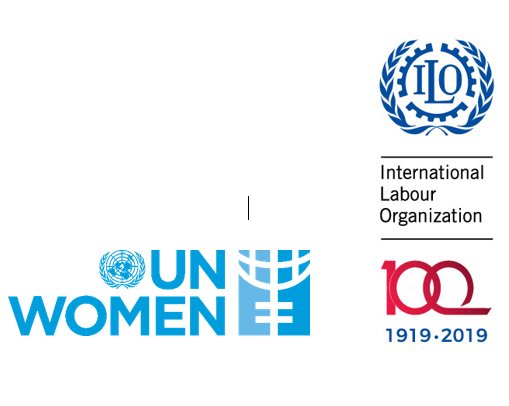Some countries have adopted laws and policies addressing the situation of workers who are victims of domestic violence, for example, in Argentina,[1] France,[2] Italy,[3] the Philippines,[4] Spain, [5] Canada,[6] New Zealand[7] and the United States.[8] While some countries address the effects of domestic violence on the world of work through specific laws on domestic violence, others include it within gender equality, labour or occupational safety and health legislation.
Good practices contained in legislation on the impact of domestic violence on work include the following provisions:
- Recognition that domestic violence is a world of work issue and that workers have the right to support and protection in employment;
- Prohibition of discrimination or retaliation against employees based on their status as a victim of domestic violence;
- Provision of paid or unpaid domestic violence leave;
- Establishment of security of employment, particularly following paid or unpaid leave;
- Provision of support services for victims in the workplace;
- Establishment of employers’ obligations to take steps to ensure workers’ safety in the workplace and when they return to work after a period of leave.
In most countries, protection or restraining orders issued by the courts explicitly or implicitly cover the workplace, although they are not always adequately enforced. A legal framework on enforcement of protection orders is critical to women workers’ safety. In the United States, for example, ten States have passed laws, enabling employers to apply for workplace restraining orders to prevent violence, harassment and stalking of their employees (Legal Momentum and The Women’s Legal Defence and Education Fund, 2015). It is important to note that, when the employer applies for such measures, it should be done in consultation with, and with the consent of, victims. In addition, promising practices can be found in Germany[9] and in the EU through the introduction of a European protection order, which, according to national law, can be applicable in the workplace. Furthermore, protection orders may also cover protection against workplace stalking, such as in Italy,[10] which can happen in the framework of domestic violence or can be perpetrated by other actors of the world of work, such as colleagues or clients. [11]
National strategies, policies and action plans are also essential tools to require action from governments and other stakeholders to help address violence against women, including domestic violence (UN Women, 2016a). Promising practices where the effects of domestic violence at work have been addressed in national strategies or action plans on violence against women can be found in Scotland (Scottish Government, 2014), Victoria (Australia) (Victoria Government, 2010), Tunisia (Government of Tunisia, 2009) and Spain (Government of Spain, 2013), amongst others. For example, the Spanish National Strategy for the Eradication of Violence against Women (2013-2016) contains a comprehensive range of workplace measures to combat violence against women, including in collaboration with trade unions and employers’ associations, such as disseminating information on the rights of working women who are victims of gender-based violence.
[1] Ley 10318/2016. Reglamento 1295/16 Córdoba, is a provincial law in the Argentine province Co?rdoba that gives an entitlement of renewable leave for gender violence (in the family or in the workplace) of up to 30 days in any one year for Provincial State workers (teachers, health workers and workers in public administration).
[2] The French Labour Code gives an employee the right to abstain from work if she has been a victim of gender-based violence.
[3] The 2016 Jobs Act gives women the right to paid domestic violence leave and compensation using the same rights and framework established under maternity law.
[4] The Philippines General Labour Standards (Republic Act No. 9262) workers are entitled to leave of up to ten days with full pay, to enable a woman to attend to medical and legal concerns.
[5] The Spanish Organic Law 1/2004 of 28 December 2004 on protection against domestic violence provides for domestic violence leave and other supports.
[6] The Ontario (Canada) Occupational Health and Safety Act, the Manitoba Employment Standards Code, the Alberta Occupational Health and Safety Act, and the Federal Government’s Occupational Safety and Health Regulations (2018) on harassment and violence.
[7] The New Zealand Domestic Violence—Victims’ Protection Act 2018, established the right for workers to take 10 days domestic violence leave.
[8] In the United States, seventeen States require state employers to adopt policies addressing domestic violence and/or have developed model policies for private businesses. Puerto Rico has gone further in requiring all businesses to adopt a protocol addressing domestic violence. Several States allow for paid leave and a Federal Executive Order Establishing Sick Leave for federal employees provides for seven or more days paid sick leave. Several states prohibit employers from discriminating against victims of domestic violence and forty-two States have amended their Unemployment Insurance Codes to clarify that victims of domestic violence are eligible for benefits. For further information see: Widiss, D, A. (2008) Domestic Violence and the Workplace: The Explosion of State Legislation and the Need for a Comprehensive Strategy. Florida State University Law Review, 669.
[9] Under the Violence Protection Act (GewSchG) 2002 a protection order can bar the presumed perpetrator from the victims’ workplace.
[10] In Italy, criminal law Act No. 38 of 23 April 2009 introduced the new crime of ‘persecutory acts’ (stalking), together with penalties, including where stalking takes place in the workplace.
[11] Workplace stalking can involve stalking by partners and ex-partners, clients stalking staff or, in some circumstances, clients stalking other clients, as can be the case in residential care or mental health care settings. It can involve excessive forms of contact and abuse by emails, telephone calls and social media, unsolicited gifts, and physical or sexual assault in the workplace. A US survey carried out in 2011, 5.1 million women and 2.4 million men had been stalked the previous year. Of women murdered by an intimate partner, 76 per cent were stalked first, and 85 per cent of women who survived murder attempts were stalked. See: NCADV https://ncadv.org/statistics
